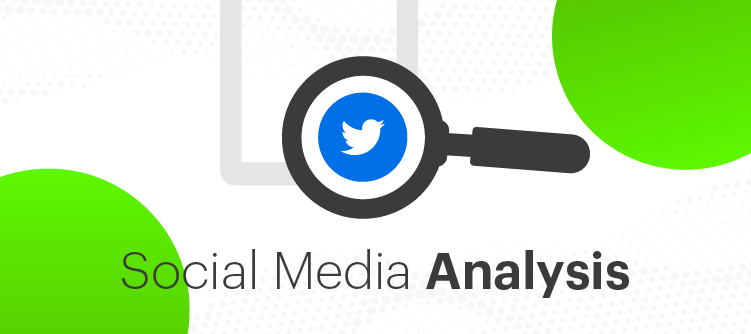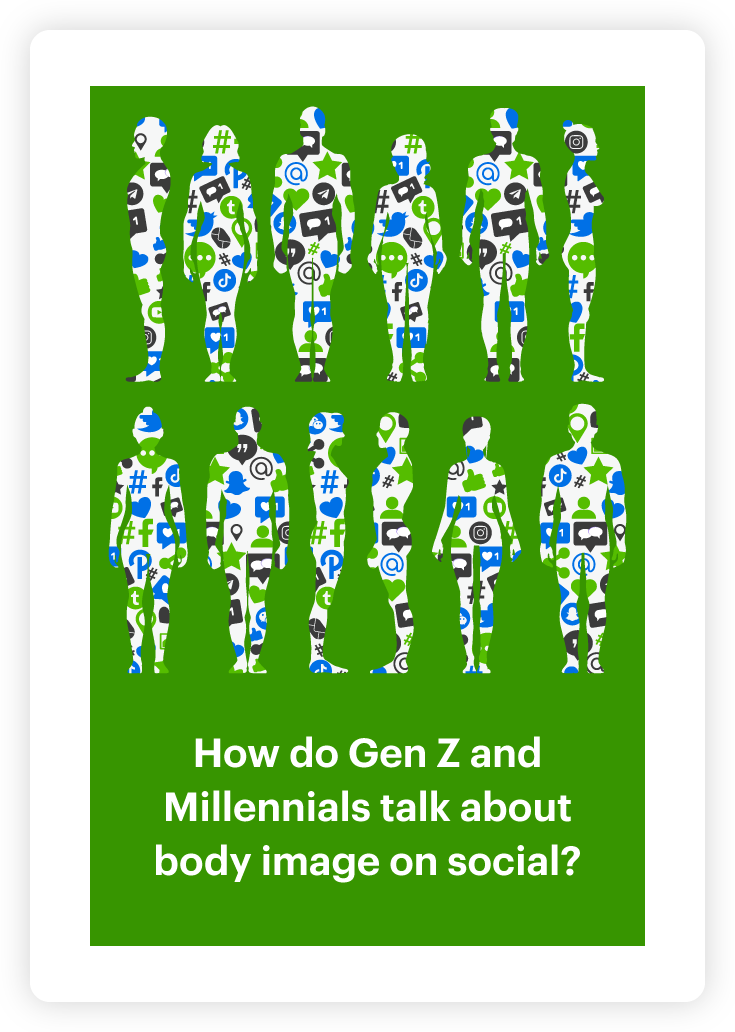Level up your social media analysis

It’s 2024. I don’t need to convince you that social media marketing has value. I’m here to tell you how to find that value – with social media analysis.
What is social media analysis
Social media analysis is the process of gathering online social media conversations, analyzing the information and then using the social insights to inform strategic decision making. Accessing the information isn’t enough – you need the right tools to help make sense of it all.
Consumers post millions of words every day on platforms like Facebook, Twitter, Reddit, and Instagram. Brands that successfully leverage this data stand to improve audience analysis, product development, competitor benchmarking and company communications.
What can social media analysis achieve?
While social media analysis often reveals new nuggets of insight, it can also be used to test your assumptions and existing brand strategies. Effective analysis can inform new strategies through the discovery of consumer preferences, but it can also test the impact of current strategy.
You can use analysis to:
- Identify trends
- Identify voice of customer
- Push customer acquisition
- Expand brand awareness
- Drive conversions
- Improve customer retention
- Better customer experience
- Understand competitive advantage
- Develop customer insights
- Mitigate risk
- Enhance employee experience
Why does social media analysis matter?
Evaluate ROI and campaign success
It can be difficult to gauge the success of a campaign that isn’t directly tied to a KPI like revenue or social media metrics including followers and likes. Social media analysis provides quantitative and qualitative data to identify the impact of a marketing campaign, product launch, brand partnership, or other conversation-worthy event.
A Hootsuite 2021 social trends survey confirmed that 85% of brands utilized social media data to improve ROI. A growing number of organizations are recognizing the importance of social media analysis in developing a comprehensive understanding of brand perception and audience opinion.
Inform strategic brand decisions
Social media analysis can analyze more than just social media – let me explain. The obvious use case for social media analysis is to analyse the impact of your social media content (ie. how did consumers respond to this post?). While social media is used for marketing, analyzing social media content can impact departments and strategies outside of marketing.
Extracting meaningful data from social media can lead to discoveries beyond marketing – including audience insight, competitive analysis, product analysis, identifying trends and minimizing risk.
Save time and energy by confirming assumptions with solid data. Analyzing the impact of brand strategy early on mitigates wasted effort and lost time. Let data inform strategy by making use of social media analysis.
Compare against competitors
Analysis means nothing, if you have no frame of reference. Context is crucial in understanding an industry as a whole and how your brand fits within that field. Metrics take on more importance when compared to industry competitors.
Your numbers might look good on the surface, but competitor benchmarking provides a deeper understanding. If your competitors are doing even better, your numbers start to look less impressive.
Social media analysis is used to compare against individual brands, industry averages and competitors based on location, size, age and more. This can be achieved through analyzing how consumers talk about your brand in comparison to competitors or how the brands themselves communicate on social media.
Measure marketing and CX effectiveness
As the team running socials and creating campaigns, marketing professionals can really benefit from social media analysis. Brands can analyze marketing efforts to uncover concrete metrics of success or failure using social media tools.
Social media analysis also informs marketing teams to spot trends, issues and areas of opportunity. Once these patterns are identified, marketing teams can investigate further through analysis tools.
Community management and customer service teams regularly use social media to communicate with consumers. Tracking and analysing these conversations can improve cx practices to streamline communications.
Opportunities for social media analysis
Audience analysis
Knowing your audience inside and out is necessary in catering products and communications to target audiences. Analyzing their words and opinions allows you to speak their language, while addressing their unique values and concerns. This form of analysis can be hyper-targeted to specific demographics based on age, location, gender, income level and so much more.
Performance analysis
Measure your own performance on social media to uncover areas of success and improvement. Identifying the strategies that aren’t working will help your brand move forward with improved communications.
Marketing metrics to track using social media analysis
- Monitor conversations over time and across audiences to understand if brand content is relevant
- Measure rates of follower interaction and compare against competitors
- Look at click through success to identify high performing posts
- Track follower growth aligned with social media campaigns to spot successful strategies
Paid social analysis
Brands are spending more and more money on paid social media efforts. With funds on the line, it’s even more important that brands identify productive strategies to effectively utilize budgets.
Useful paid social metrics
- Number of ads
- Total spend
- Clicks
- Click through rate
- Cost per click
- Campaign ROI
Customer service analysis
Customer experience teams can make or break how a brand is perceived by a consumer. Timely, effective and friendly cx communications can produce loyal customers. However, ineffective community management teams will ensure a consumer never comes back. Track communications using social media analysis tools to identify successful interactions and implement protocol.
Influencer analysis
Social media analysis can be used to track influencer partnerships, but it can also be used to identify influencers in line with your brand and audience. It’s crucial to choose high performing influencers with relevant audiences. As a paid marketing effort, influencer partnerships should improve and diversify customer acquisition and sales strategies.
Sentiment analysis
Social media analysis has value beyond numbers and percentages. Sentiment analysis uncovers the unique opinions and emotions of your audience. Tracking sentiment over time and across audiences can help your brand identify consumer trends and target audiences. This form of analysis can be used to measure brand content performance and customer experience efforts.
Social data Meets Relative Insight
Relative Insight takes social insights and sentiment analysis one step further. Our text analytics tool discovers language trends using a form of comparative analysis. Relative Insight can uncover the words, phrases, grammar, topic and emotion unique to a written data set in comparison to another. Comparative analysis can be used to analyze language over time or across audiences, brands and data sources.
With Relative Insight, the opportunities are endless. Our technology can enhance social insights, providing an extra layer of analysis. The main use cases we see this working effectively in include:
Competitor benchmarking
Social media insight is nothing without contextual understanding. Competitor benchmarking allows you to analyze your brand in comparison to direct competitors or a wider industry. Relative Insight analysis uncovers what makes your brand unique – strengths and weaknesses – to help identify your position in the market in addition to gaps or missed opportunities.
Case Study: Analyzing social media output from five burger brands
Topic or brand analysis
At its core, topic analysis uncovers how people speak about a topic or brand – but your analysis shouldn’t stop there. Relative Insight takes it one step further and compares different demographics, geographic locations, how opinions have changed over time and more.
Case Study: Comparing NFL fan conversations ins the UK and US
Measuring campaign effectiveness
After launching a campaign, measure the qualitative impact of your marketing efforts. Beyond likes and other stats, compare conversation before and after a campaign or newsworthy event to understand public response. By comparing against a baseline, you’re discovering what changed – how the event impacted conversation.
Case Study: How Elon Musk singlehandedly impacted the Bitcoin market
What does this mean?
Social media analysis is necessary in identifying, tracking and improving brand strategies. Insights or metrics to confirm the success of a campaign ensures your brand can make informed decisions without guesswork.
Strategies should be ever evolving, as audiences change and progress over time. Social media analysis allows your brand to constantly tweak communications, optimize budgets and form lasting relationships with consumers.
